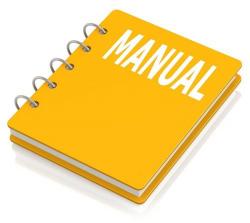Ford Taurus, Mercury Sable 2004 Factory Service & Shop Manual
Catalog:
Model:
Complete workshop & service manual with electrical wiring diagrams for Ford Taurus, Mercury Sable 2004. It's the same service manual used by dealers that guaranteed to be fully functional and intact without any missing page.
This Ford Taurus, Mercury Sable 2004 service & repair manual (including maintenance, overhaul, disassembling & assembling, adjustment, tune-up, operation, inspecting, diagnostic & troubleshooting…) is divided into different sections. Each section covers a specific component or system with detailed illustrations. A table of contents is placed at the beginning of each section. Pages are easily found by category, and each page is expandable for great detail. The printer-ready PDF documents work like a charm on all kinds of devices.
· M50 Sable GS, four-door
· M53 Sable LS, four-door
· M55 Sable LS-Premium, four-door
· M58 Sable GS, station wagon
· M59 Sable LS-Premium, station wagon
· P52 Taurus LX, four-door
· P53 Taurus SE, four-door
· P55 Taurus Special Value Group, four-door
· P56 Taurus SE-Comfort Group, four-door
· P58 Taurus SE, station wagon
· P59 Taurus SE-Comfort, station wagon
· 2 3.0L Vulcan, OHV, EFI, six-cylinder, flex fuel
· S 3.0L, DOHC, EFI, six-cylinder
· U 3.0L Vulcan, OHV, EFI, six-cylinder
EXCERPT:
2004 Taurus/Sable
Workshop Manual
Alphabetical Index
A B C D E F
G H I J K L
M N O P Q R
S T U V W
Table of Contents
1: General Information
00: Service Information
2: Chassis
04: Suspension
05: Driveline
06: Brake System
11: Steering System
3: Powertrain
03: Engine
07: Automatic Transmission
09: Exhaust System
10: Fuel System
4: Electrical
12: Climate Control System
13: Instrumentation and Warning Systems
14: Battery and Charging System
15: Audio Systems
17: Lighting
18: Electrical Distribution
19: Electronic Feature Group
5: Body and Paint
01: Body
02: Frame and Mounting
…
Shift Patterns Printable View (9 KB)
Upshifts
Upshifting is controlled by the powertrain control module (PCM). The PCM receives inputs from various engine or vehicle sensors and driver demands to control shift scheduling, shift feel and torque converter clutch (TCC) operation.
The PCM has an adaptive learn strategy to electronically control the transaxle which will automatically adjust the shift feel. The first few hundred miles of operation of the transaxle may have abrupt shifting. This is a normal operation. If the battery has been disconnected for any reason it will need to be kept disconnected for approximately 20 minutes to reset the adaptive shift pressure strategy or use the scan tool to clear the transmission keep alive memory (KAM) tables.
Downshifts
Under certain conditions the transaxle will downshift automatically to a lower gear range (without moving the transaxle range selector lever). There are three categories of automatic downshifts: coastdown, torque demand, and forced or kickdown shifts.
Coastdown
The coastdown downshift occurs when the vehicle is coasting down to a stop.
Torque Demand
The torque demand downshift occurs (automatically) during part throttle acceleration when the demand for torque is greater than the engine can provide at that gear ratio. If applied, the transmission will disengage the TCC to provide added acceleration.
Kickdown
For maximum acceleration, the driver can force a downshift by pressing the accelerator pedal to the floor. A forced downshift into a lower gear is possible below calibrated speeds. Specifications for downshift speeds are subject to variations due to tire size, engine and transaxle calibration requirements.
…





